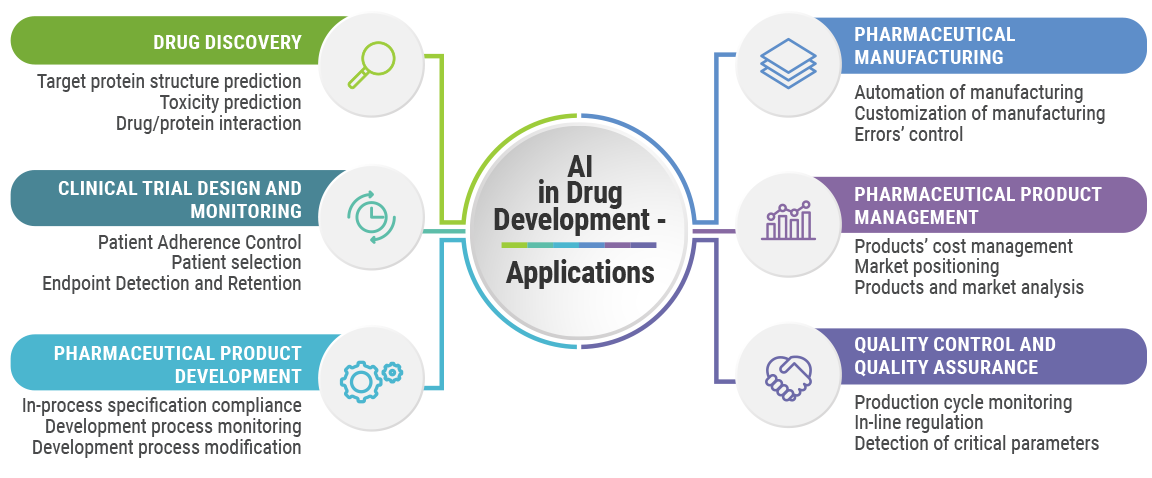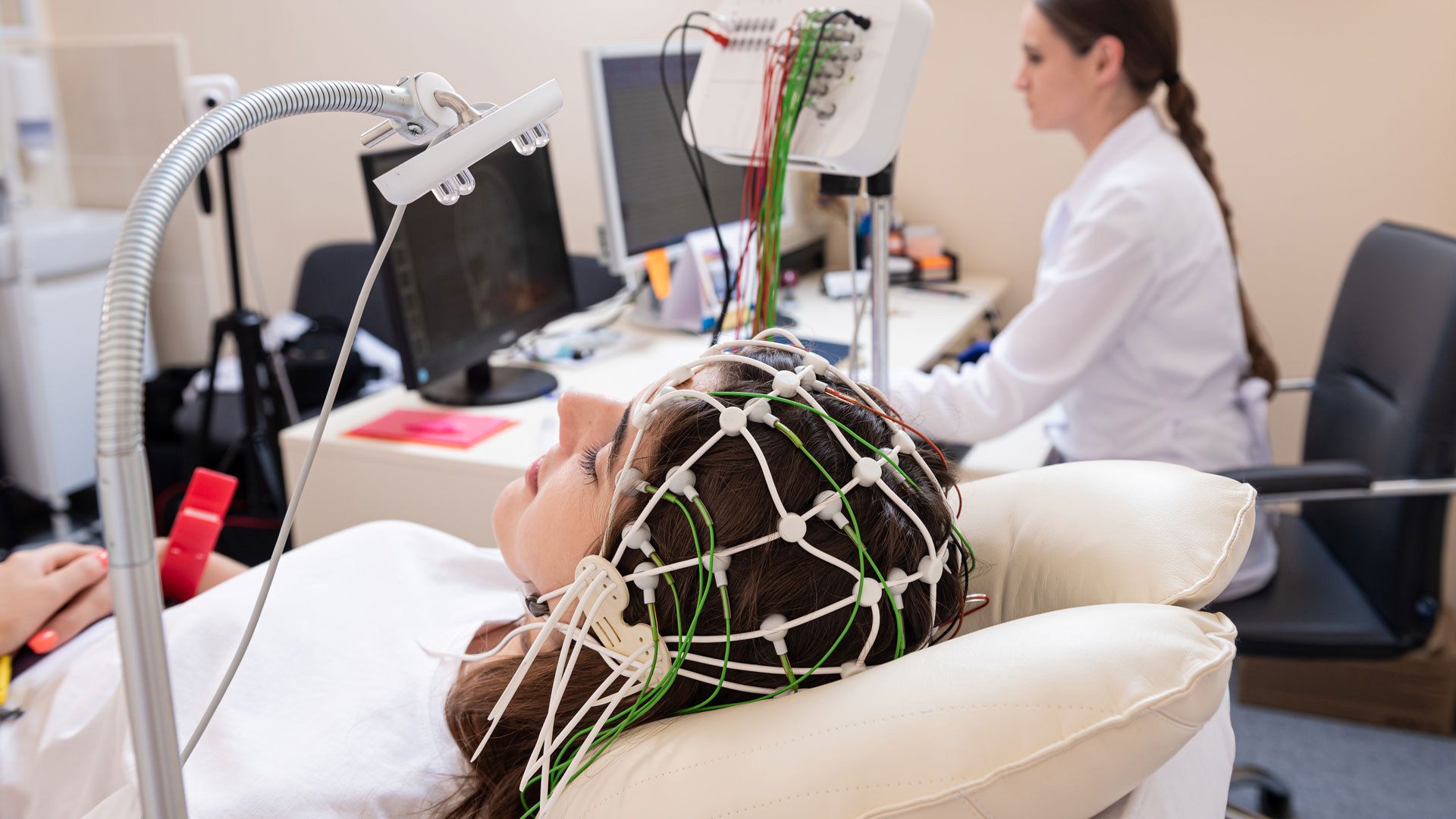With digitization moving at an incredible pace, the last decades can be justly called the golden era for healthcare and pharma companies. And when it comes to technologies, Artificial Intelligence and Machine Learning are game changers.
Here are some statistics testifying to that point as well:
According to ‘Artificial Intelligence (AI) In Drug Discovery Global Market Report 2022, By Technology, By Drug Type, By Therapeutic Type, By End-Users’ report, the global Artificial Intelligence (AI) in Drug Discovery Market is estimated to be worth $2994.5 million by 2026 with IBM Corporation, Microsoft, Atomwise Inc., Deep Genomics, Cloud Pharmaceuticals, and other well-known tech companies leading the movement.
In our article, we will observe the advancements that AI brings to drug development, reveal the organizations’ key challenges while adopting AI tools, provide ways of facing them and dig deeper into some popular use cases of AI in the pharmaceutical products lifecycle.
Benefits
The impact of AI on drug development can be considered revolutionary, primarily because of its ability to significantly reduce the usual drug design timeframes and expand the current drug discovery scale.
Here are four key benefits of AI in drug development:
1. Objectivity
AI is an objective science. It means the AI-based drug development process is not a subject of prejudice, existing knowledge, personal interests or anything else that can directly impact the development outputs.
2. Constant advancement
Besides assisting humans with mundane tasks, AI leverages the latest technologies in biology and computing. This process is ever-evolving, and with increasing powers of innovation and the reduction of costs of AI tools, AI plays a vital role in drug development advancements now and in future.
3. Higher predictivity
In drug screenings, the enhanced predictivity power of AI tools positively impacts the process of defining meaningful interactions. Therefore, a thorough and meticulous approach to parameters’ design can significantly reduce false positives.
4. Streamlined process and reduced human inefficiencies
With the help of a virtual lab, drug screening outputs can be streamlined, thus significantly reducing human resources hours.
Challenges
Despite the growing interest in AI and the technology’s great potential, there are still a number of challenges that healthcare organizations face when it comes to implementing AI.
Data management
The overall success of the AI initiatives is closely tied to an enormous amount of data leveraged for AI systems’ training. There are 2 potential pitfalls lying in the data management process, i.e.:
- the data access implies substantial additional costs,
- the data should be from validated and trusted sources.
Lack of talent
AI-based systems require highly qualified personnel, which also incurs additional costs.
Ethical considerations and the black box phenomenon
Despite AI evangelists’ profound claims about AI and ML adding value to human work, the heated debate on whether AI can take away human jobs never seems to end. Another hot topic is a black box phenomenon, i.e. the issue with the visibility of the processes and workings in between the inputs and outputs.
Though the above mentioned challenges seem hard to overcome, each has quite straightforward solutions.
The data management and the lack of talent issues can be solved only if an organization sees clear benefits of the AI implementation and is ready to set the right priorities to reach maximum operational efficiency. As for the black box phenomenon, this concern can be addressed with the help of explainable AI, i.e. the system where the entire process of AI workings is straightforward and easy to understand for humans.
Use Cases
The role of AI in drug development cannot be underestimated. One of the main criteria that help to measure the impact is that AI can be applied through the whole lifecycle of pharmaceutical products.
Basically, the use cases of AI in drug development can be broken down into the following categories (with examples of AI application):
- Drug discovery
- Clinical trial design and monitoring
- Pharmaceutical product development
- Pharmaceutical manufacturing
- Pharmaceutical product management
- Quality control and quality assurance

Below we will provide several use cases from some of the categories listed above.
Drug discovery
Use case 1. Toxicity prediction
Preventing a drug’s toxic effects is impossible without predicting a drug molecule’s toxicity. One of the examples of such kind of predictions is the DeepTox machine learning algorithm which was able to:
- detect static and dynamic features in the chemical descriptors of the molecules
- predict molecule toxicity based on over 2000 predefined toxicophore features
Use case 2. Target protein structure prediction
Numerous proteins directly impact the disease progression. Thus, predicting the target protein’s structure is vital while developing the drug molecule. In structure-based drug development, AI may become a helpful tool since it can predict 3D protein structure. A good example of such AI tool leverage is the AlphaFold AI tool. AlphaFold was able to:
- analyze the distance between amino acids and the corresponding angles of the peptide bonds
- predict the 3D structure of the target protein
- predict correctly over half of 43 3D structures.
Manufacturing
Use case 3. Pharmaceutical manufacturing
AI tools are widely used in drug manufacturing. E.g. DEM AI tool streamlines the manufacturing process by:
- predicting the perspective tablet path during the coating
- analyzing the time that is spent by tablets under the spray zone
- analyzing varying blade shapes and speed
- studying the segregation of powders
Quality control and quality assurance
Use case 4. Quality control
Numerous AI tools are used to regulate the in-line manufacturing processes. The artificial neural network uses several algorithms such as self-adaptive evolution, backpropagation and local search to:
- predict the desiccated-cake thickness and the temperature in the future time period in predefined conditions, and thus
- maintain the final product quality check.
Conclusion
We’ve observed the benefits of AI in drug development, discussed the key challenges in adopting AI and possible ways of facing them, and described some popular AI-based drug discovery use cases.
In a nutshell, AI is capable of making a significant technological contribution which can reshape the whole drug discovery process. However, as many believe, AI-based achievements, perceived as breakthroughs nowadays, will soon become a standard practice for the pharmaceutical industry. The clear and step-by-step AI adoption strategy can open up new horizons for life science companies and help them win in the competitive market.
Kanda brings to the table unique capabilities that help our customers overcome numerous challenges, including AI adoption concerns.
By deploying the latest tools and technologies, such as
AI and Machine learning; Big Data;
Cloud Engineering and Cloud Deployment; Intelligent Assistants and IoT, we empower Digital Health pioneers and established healthcare delivery organizations at all phases of their software development lifecycle.
Talk to our expert to start your small tech revolution with us!

 Below we will provide several use cases from some of the categories listed above.
Below we will provide several use cases from some of the categories listed above.



